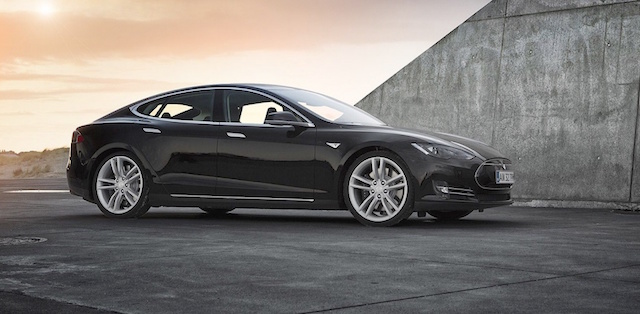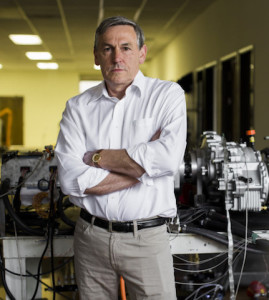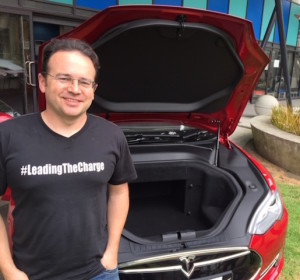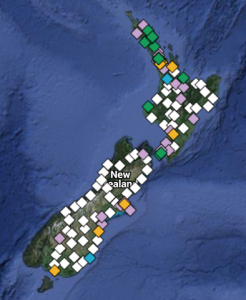
A convoy of electric cars (EVs) will make its way from North Cape to the Bluff over the next couple of weeks, stopping at selected points to talk up the environmental benefits of emission-free motoring.
Not that all the cars will be emission free – some in the convoy, like the BMW i3 and Mitsubishi Outlander PHEV, will rely on their back-up petrol engines to keep the electrics ticking over.
But the three US-built Teslas in the field are totally battery-dependent. The message to New Zealanders will be clear: EVs are going to change the world. Especially the latest from Tesla, the mid-size Model 3 sedan (top).
Global financial powerhouse Morgan Stanley expects the Model 3 to have a cataclysmic effect on the motoring industry. In a note to investors only days ago, it said Tesla’s share price (around US$237) was undervalued.

It added: “We have said for some time that, despite its many worthy accomplishments, Tesla had not fully disrupted the auto industry. We are now getting a feeling that this may be starting to change.”
The fellow who recognised Tesla founder Martin Eberhard could indeed change the way the world moved on wheels was a New Zealander, Dargaville electronics engineer Ian Wright.
Wright and Eberhard were neighbours in California in the early 1990s, when Wright worked for a US telecommunications company. These days Wright has his own US company, Wrightspeed, which develops specialised powertrains for the trucking industry.
But back then Wright joined Eberhard and his business partner Marc Tarpenning to form the original Tesla team. Wright steered development of its first model, the Lotus Elise-based roadster, before Tesla Motors was incorporated in 2003 and South African-born billionaire Elon Musk took control.
Wright set up two key partnerships for Tesla: the early engineering contract with Lotus and licence agreement with California company AC Propulsion for its motor and inverter technology.
He told a US magazine last year: “Part of what we set out to do in the beginning was to change the public perception of electric cars, because the public really did think like I did: they’re golf carts, aren’t they?
“That isn’t the public perception now at all. So I think Tesla’s already changed the world in pretty important ways about the perception of EVs … you have to say, to a large extent, that the Nissan Leaf and Chevy Volt and the Ford EVs are all a reaction to what Tesla did.”

In the past few days around 300,000 people around the world have ordered a Tesla Model 3. Deposit is US$1000. It isn’t even in production yet and probably won’t be until 2018, when it will be available in New Zealand and Australia through Tesla’s outlet in Sydney.
The five-seat Model 3 has a range of around 350km on a single charge and starts at US$35,000 (NZ$52,000) before the US Government’s current US$7500 (NZ$11,000) tax credit.
There is unlikely to be a government tax incentive when the Model 3 goes on sale in NZ. There is not one now, despite lobbying by EV carmakers and support groups. EVs are expensive and thin on the ground here. The Tesla Model S costs around NZ$120,000.
One fellow dead-set on an EV future is Auckland’s Steve West, a software developer and the chief executive of Charge.Net.NZ. He has three Teslas: two Model S sedans, and a roadster. He will be driving a sedan in the EV convoy.
West’s company is working with energy providers and others to install fast-charge stations for EVs throughout the country. He aims for 100 such stations by 2018, each one capable of charging an EV in 20-25 minutes.

And he has some big trading names on his side. Partners include The Warehouse, Noel Leeming, Foodstuffs, Four Square, Pack‘nSave, Z Energy, Caltex. Then there are North Island supply companies Northpower, Power Co, and Wellington Electricity, and the South Island’s Orion, Alpine Energy, and PowerNet.
The North Island now has nine fast-charge stations. Another 15 will open this year, more than 20 over the next couple of years. The South Island has none, but eight will open this year and another three are being built. Thirty-eight more are planned by 2018, when the Tesla Model 3 is due.
West would like some sort of NZ government support for EVs. “The party line is they don’t subsidise the fossil fuel industry, so why should they subsidise EVs,” he said.
“But history shows that isn’t true. International Monetary Fund (IMF) figures show governments around the world subsidised the global fossil fuel industry in 2015 by US$5.3 trillion.”
Prominent global economists, like Harvard University Professor Robert M. Beren, dispute the IMF findings, although all agree that worldwide government subsidies of the fossil fuel industry amount to billions of dollars.
Oil-rich Venezuela, for example, doesn’t produce enough fuel to meet domestic demand, so it buys it on the world market and gives it to suppliers to sell at an absurdly low price. This is a direct subsidy. Economists say such subsidies around the world amount to US$500 billion annually.
- Tesla and Japanese electronics giant Panasonic are building a ‘Gigafactory’ in the Nevada desert to produce enough lithium-ion batteries to meet Tesla capacity of 500,000 cars a year. “It will produce more lithium-ion batteries than every factory in the world combined, in one location,” says Musk. “It will also be building the most advanced battery and cell in the world.” Five years ago, when lithium-ion battery packs limited an EV to a range of around 160km, Panasonic said it would have by 2020 a pack good for 1000km.
